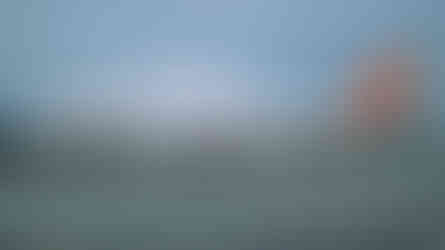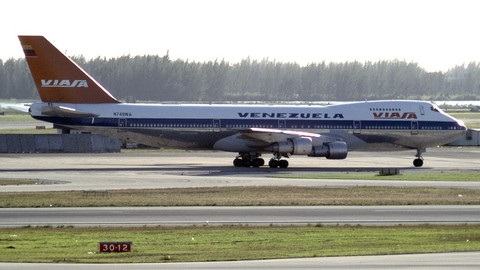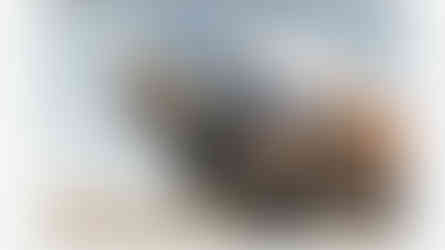Viasa 747s in 1:400 - Part 2, N749WA
- Jorge A. Zajia
- Feb 20, 2022
- 5 min read
Updated: Nov 11, 2022

With the recent release of KLM/Viasa 747-200 PH-BUG by Phoenix Models, the total number of Viasa 747s in 1:400 scale became four: two versions of N749WA, one by Aeroclassics and another one by Magic; and two versions of PH-BUG, one by Aeroclassics and one by Phoenix. I took the opportunity to compare Phoenix's new release with its Aeroclassics counterpart, which you can see here. Then, I also thought it would be opportune to do the same with N749WA.
The Aircraft
Line number 237 was delivered to World Airways on June 10, 1974 as a Boeing 747-273C, the C designation stood for "convertible," which meant it could be quickly configured to carry freight or passengers. In the case of the Boeing 747-200, this was done through a nose cargo door, that easily allowed for the passenger seats to be installed or removed.
During its time with World Airways it was registered as N749WA. It was never seen wearing the colors of World Airways, but rather the liveries of its numerous lessors as follows:
Korean Air: June 1974 - May 1979
Braniff International: April 1979 - June 1981
Viasa: June 1981 - September 1984 (Subleased from Flying Tigers, flew freight for Lufhtansa and American Airlines in late 1983 and in mid-1984 respectively)
Flying Tigers: October 1984 - December 1989 (Flying Tigers bought it off the lease in May 1985 making the livery match with its owner of record for the first time)
In December 1989 it was bought by Evergreen International and registered as N470EV. Between July 1994 and September 1995 it was leased to Southern Air Transport, and then it went back to Evergreen to become the first 747 firebomber "947." It was retired in February 2012 and stored at MZJ. (Sources: rzjets.net, Airliners.net)
It is important to note that during its busy life, it was only seen carrying passengers during its time at Braniff.
The Models
Both versions appeared in late 2007, the Aeroclassics one was part of their November releases of that year. As expected, the Aeroclassics version is superior to the Magic version. However, both examples have some serious mistakes/omissions.

The Magic mould has a nice shape and it looks good next to the well-known and respected Big Bird mould used by Aeroclassics, though I think it would have looked better without their signature early antennas. It also has more printed details than the Aeroclassics one. I particularly like the opaque metal of the belly, the paint of the wing box fairing, the dark fan blades of the engines, and the different tone of grey of the reversers (Magic has been guilty of producing models with the reversers deployed. In favor of this model, I'd like to think that is not the case here, but rather a touch of realism). Magic pros however, are overshadowed by their poor colors, specially the blue cheatline and Venezuela titles. The font is also notoriously off, and the cheatline to low below the middle of the nose cone. Note how Magic does have an antiglare, while the Aeroclassics is missing it, more on that later. Finally, Magic Models is infamous for poor manufacturing techniques, specially paint application, which has resulted in bubbles. Luckily, the example I own only has some very minor paint irregularities in the wing roots, not any worse than issues found in many of my models from other manufacturers.
Looking at the port side, overall both manufacturers did a good job aligning the fuselage elements. The titles match their position in relation to the windows. On the tail however, it can be seen that Magic placed the Viasa titles too high. When looking at the model by it self it is almost impossible to notice this. What is fairly noticeable is that Magic's font is too straight, especially Viasa's "V."
The starboard side elements also look properly aligned on both examples, and the font still looks better on the Aeroclassics one.
One thing that comes up on this side is a bit of over detailing by Magic. While I like the APU intake and the belly cargo doors, the service doors seem to have too much detail when compared to how the real aircraft looked.
The real aircraft. (Copyrights: Richard Vandervord, Steve Williams)
Antiglare, Nose Cargo Door, and Other Missconceptions
As mentioned earlier, Aeroclassics omitted the antiglare on their version, which is a significant error. Magic did print an antiglare, but it is the wrong shape, too wide and round, whereas N749WA's antiglare was pointy towards the nose. Ironically, when the models are looked at from the side, it becomes less obvious that the Aeroclassics is missing its antiglare, while Magic's wide antiglare makes the model look a bit odd.
Another important feature of this aircraft that both manufacturers omitted is the outline of the nose cargo door. At least judging by my two other 1:400 747 factory freighters (excluding the interactive ones), when a nose cargo door is present, it should be printed. Additionally, small Viasa titles that were located under the nose cargo door are also missing on both models.
I am tempted to assume that when this model was produced neither manufacturer was fully aware that this aircraft was a freighter for Viasa. It doesn't help that its designation was C instead of F, and that it was actually seen plugged to jetbridges and passenger terminals when it flew for Braniff. Also, Viasa painted the aircraft with their standard livery, and no cargo markings. In fact, this was the only 747 that was fully painted in Viasa colors ever.
In his autobiography "Guiado por La Providencia," Captain Luis Emiro Cañas, who was one of only 9 Viasa pilots that got assigned to fly N749WA, offers some details of Viasa cargo operations using this aircraft. Captain Cañas states that the lease agreement was done with Flying Tigers (not World Airways), and also indicates that Viasa flight crews flew other Flying Tigers 747s and routes as part of the agreement between the two companies. So, in a way Viasa acted as a flight crew contractor for Flying Tigers.
Magic Models also released N749WA in the Viasa/Flying Tigers hybrid livery that it wore after the Viasa contract was over.

The Box
The Aeroclassics version comes in the standard Latinclassics box with the black craddle. The Magic box design is quite nice, and the material is sturdy. The box also includes the standard Magic stand, which is well made, and I use (to display another model). However, Magic used a bunch of well-known photos without giving any sort of credit to the authors, which I think lacks decency and detracts from the otherwise nice design.
In Summary
These are two nice 1:400 747 replicas of an important aircraft in Viasa's history. Both are strong moulds, but once again, Aeroclassics fine lines and clean finish makes their version the winner, even without the antiglare.
I have seen an extensive amount of Viasa aircraft's pictures and I can see where Magic might have gotten the idea to use that light shade of blue. However, it stands out from the rest of my Viasa models, and not in a good way. It is also nice that Magic noticed the antiglare, but it is a shame that they got the wrong shape. Aside from that, this could have been a strong opponent to the Aeroclassics version.
As far as the nose cargo door goes, I think it is an important omission on both models. I am hopeful that the numerous errors around the nose section on both of these models are a good reason to see it re-released in some future generation of classic 747s in 1:400.
Jorge A. Zajia
Sources:
Cañas L.E. (2020) Guiado por La Providencia

































Comments